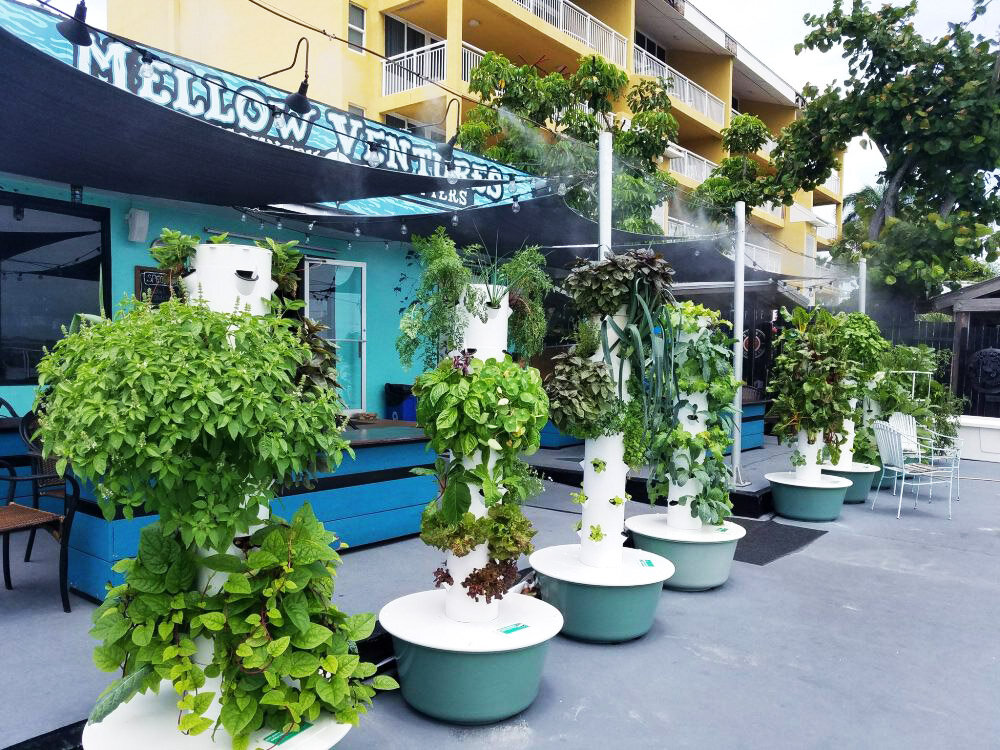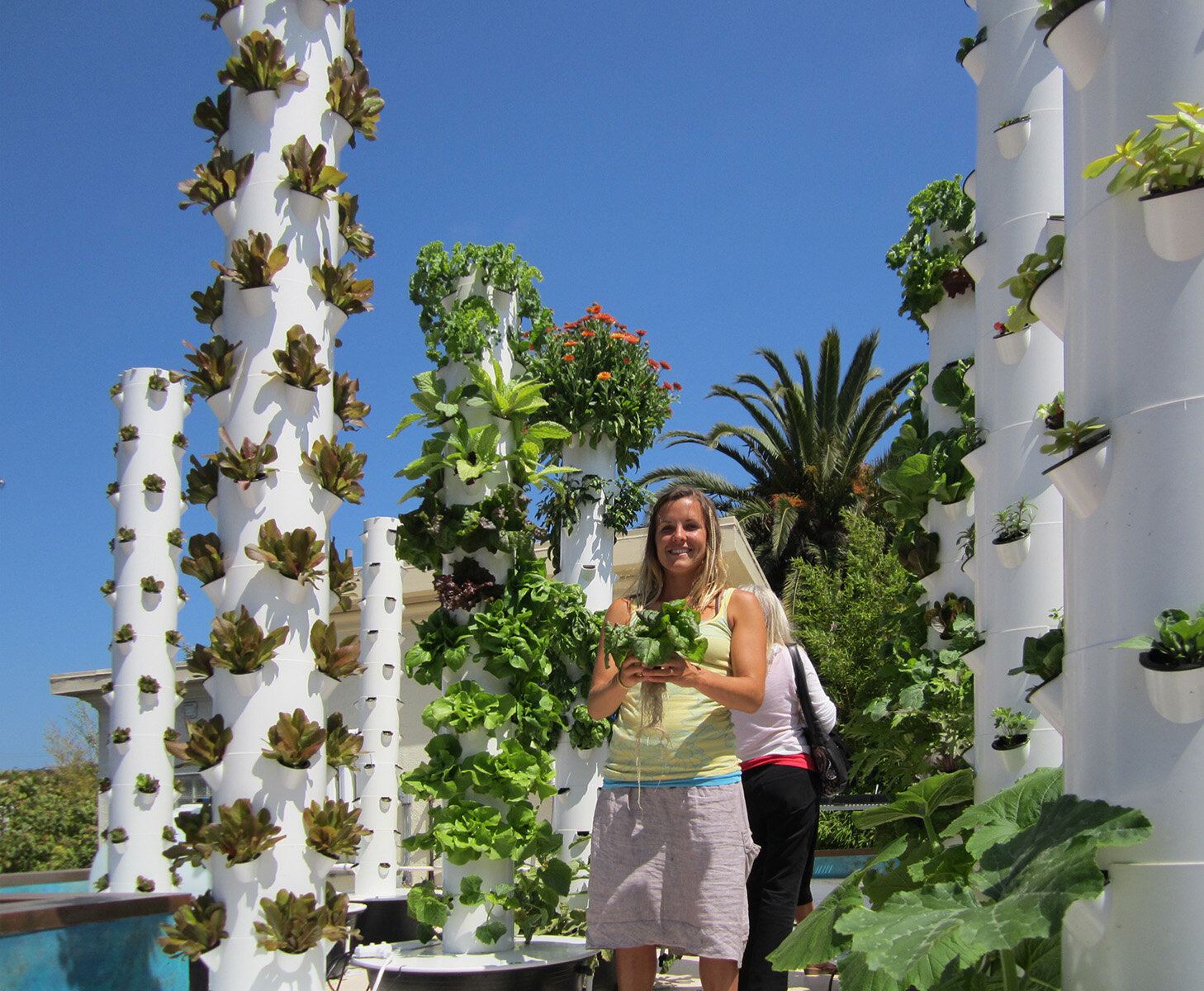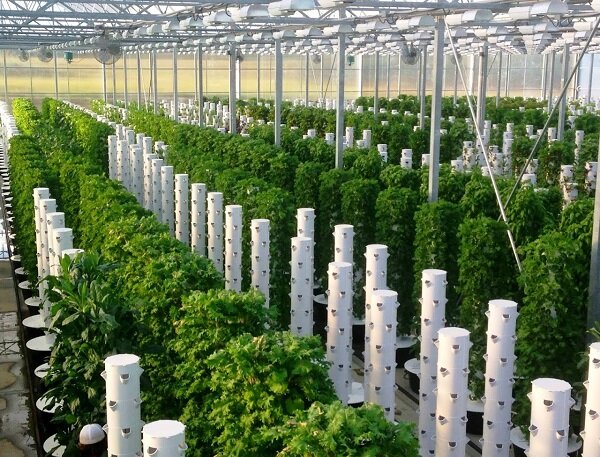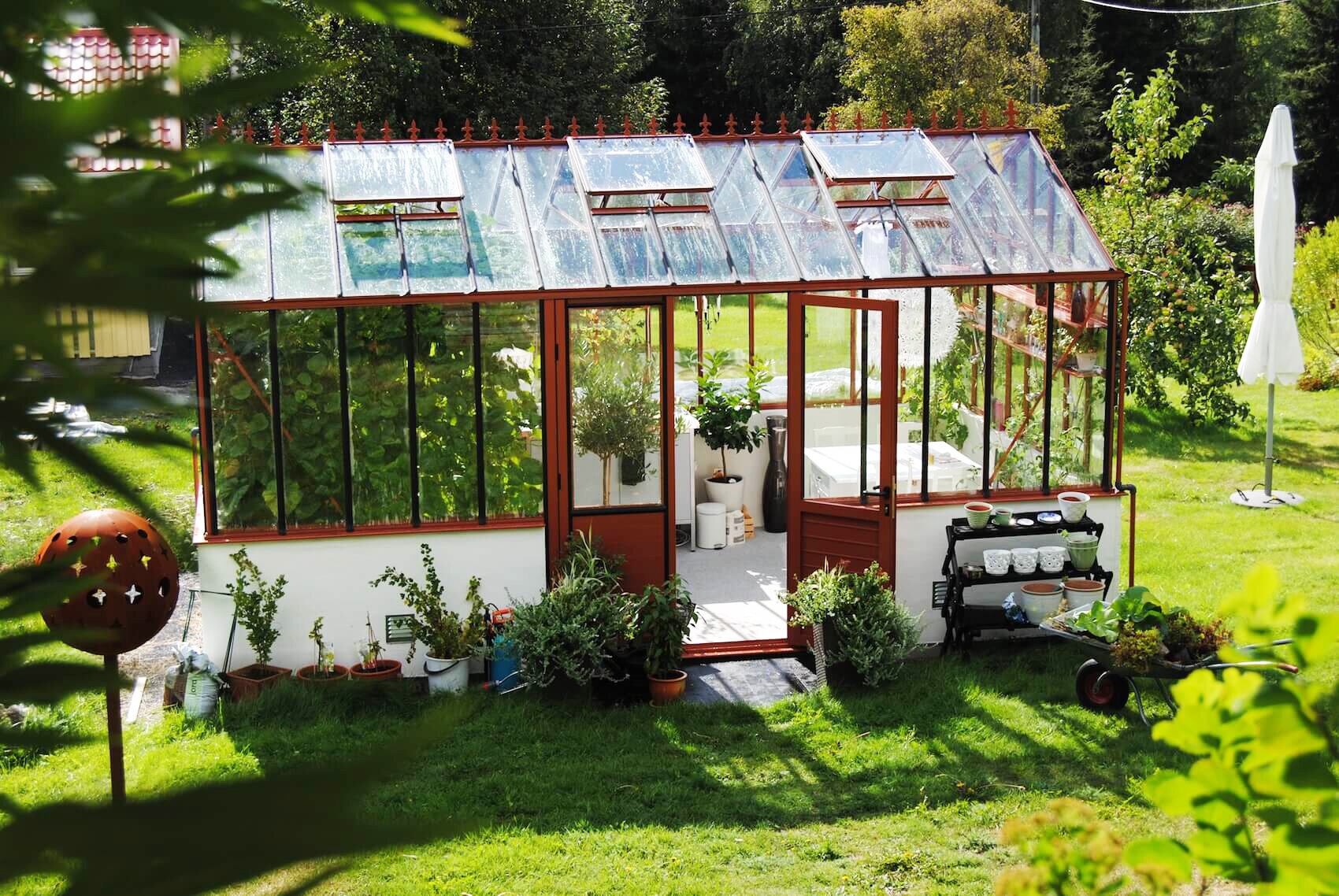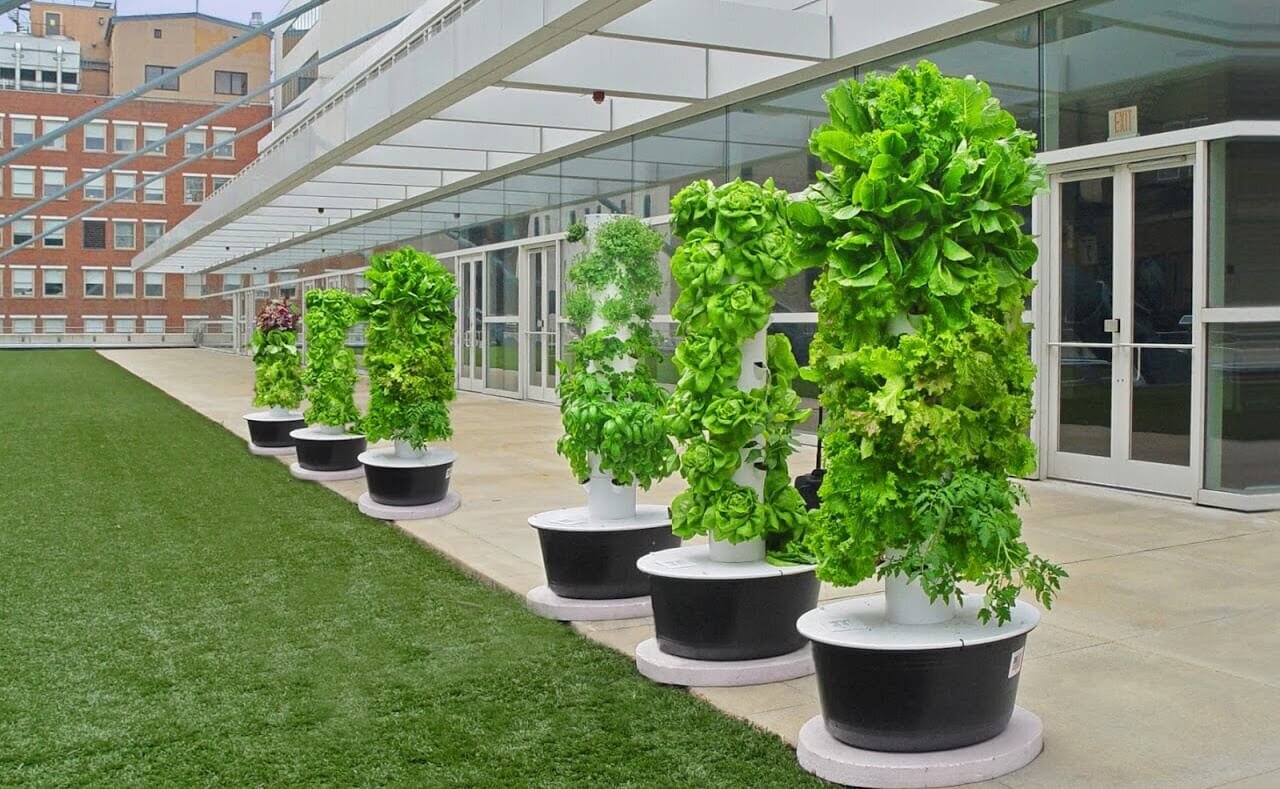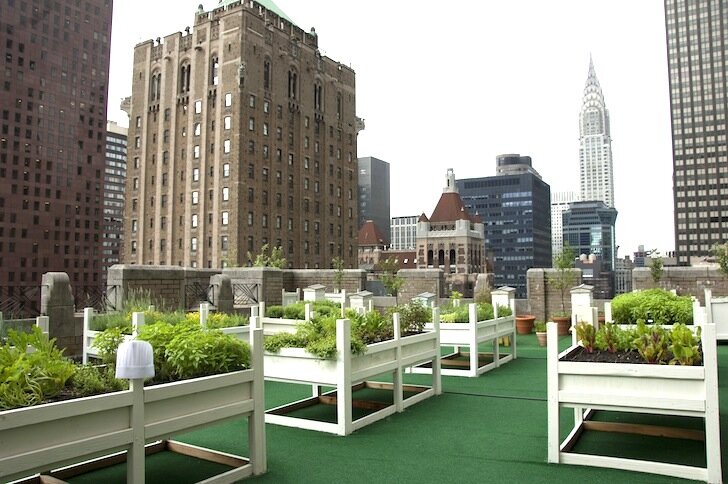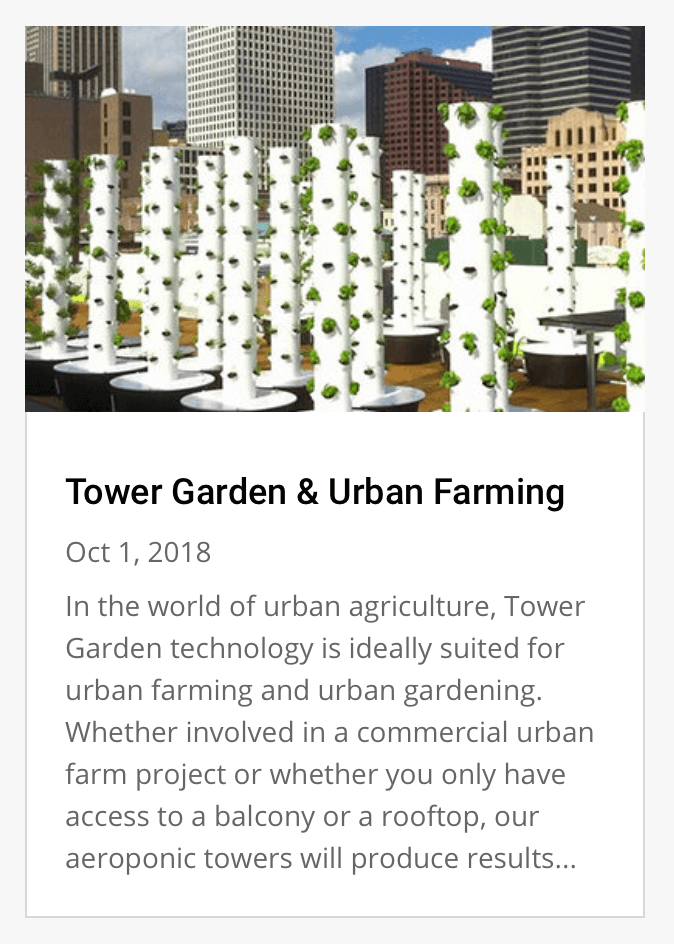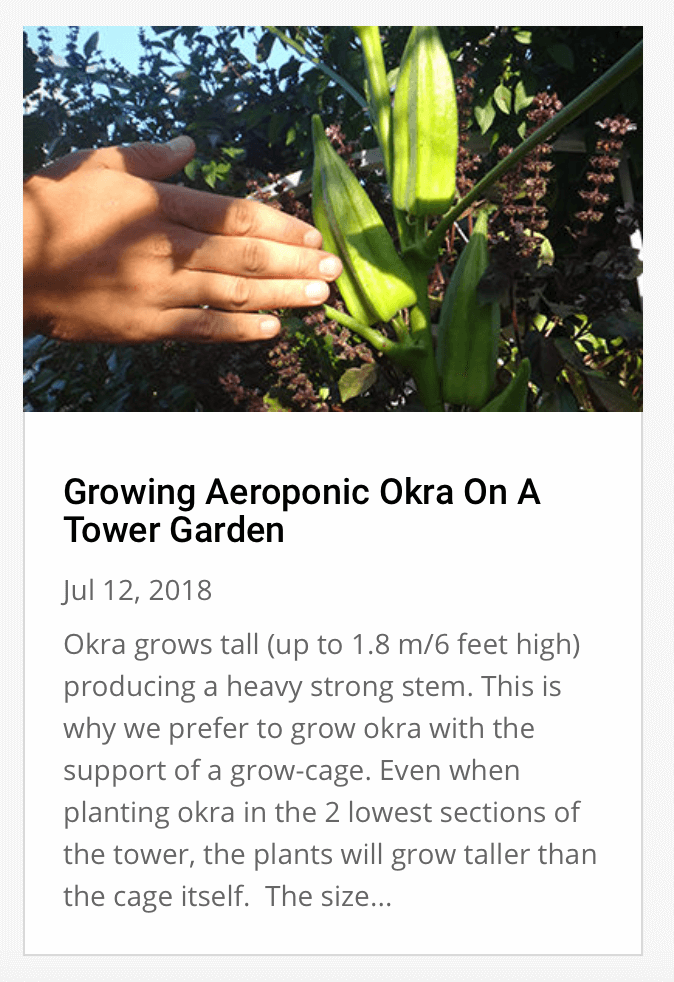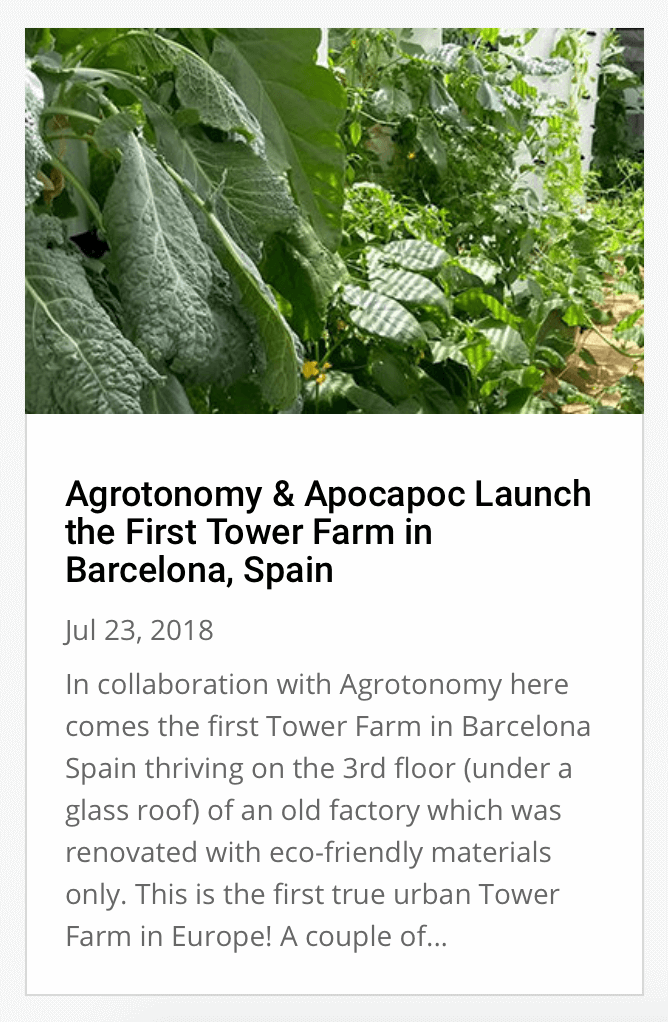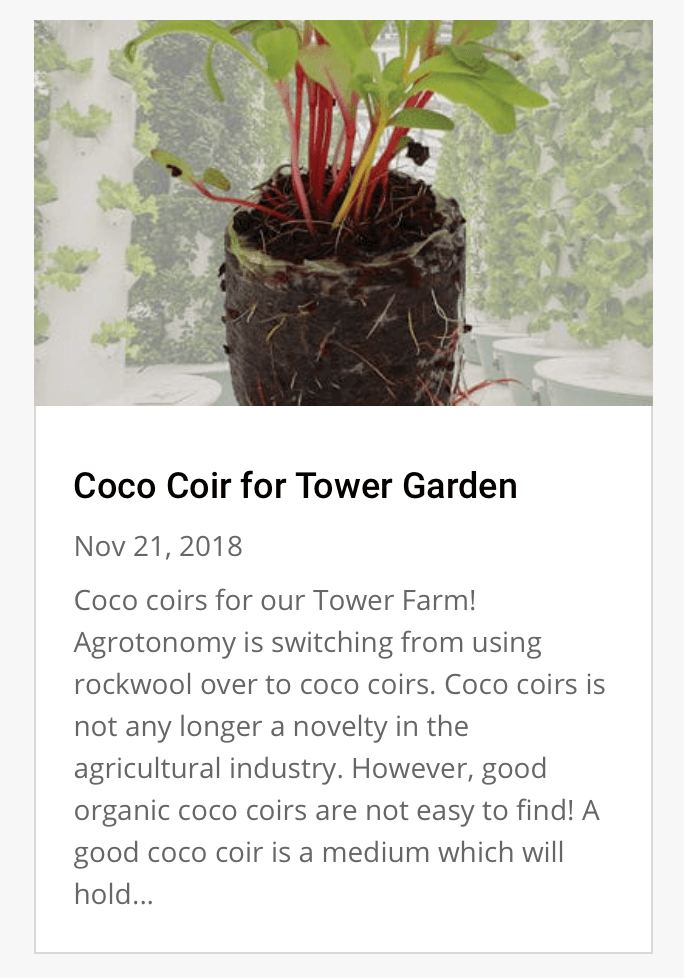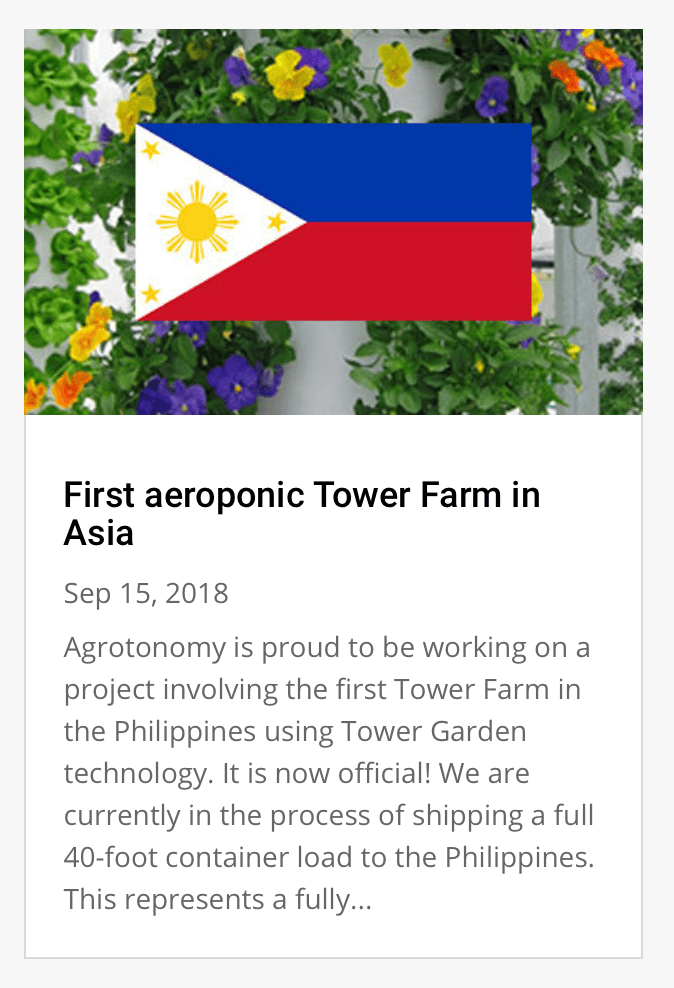Aeroponic Vertical Garden Farms
Changing The Future Of Food.
Sanura M. Tower Garden Distributor ID: USM0354273
By making healthy food more accessible, the vertical urban farming movement is literally changing the way people eat and offering new innovative ways to grow food. Aeroponic vertical growing farm systems are now moving on a world wide scale!
Vertical Garden Farms use no soil and less water, little electricity, and offer the ability to grow all year round which includes through dry climates and through the cold winter months.
It is ideal to grow in the ground, however this offers a new option for when many are not able to grow in the ground and so that more people can grow food and have access to food just about anywhere. Now we can utilize air space by growing vertically and covering areas such as rooftops and more.
These vertical tower growing systems are perfect for those wishing to supply fresh herbs, leafy greens, and vegetables in larger quantities. Community organizations, restaurants, neighborhood associations, churches, schools, workplace cafes, food banks, and many more, could benefit from the experience of growing a large garden. In as little as 225 square feet, you can have an aeroponic vertical garden that produces 336 plants!
We have some wonderful enlightening exciting new ideas to help make greater change happen on a positive scale!
Imagine how many people we could feed simply if we had vertical tower growing systems all around.
Aeroponic Vertical Farming
Chef Garden Farms:
Chefs love to grow their fresh foods using aeroponic vertical gardens right from farm to table! Many restaurants have embraced the movement to source ingredients locally. And it doesn’t get much more local than growing fresh ingredients about 50 steps or so away. Many are even using their own buildings rooftops to grow food for their restaurants below.
Basil – easy-to-grow herb, common choice for pesto base
Beans – wonderful whether raw or cooked in stir-fries or soups
Broccoli – a personal favorite, steamed or stir-fried
Cabbage – often steamed, primary ingredient in slaw
Chard – delicious, versatile green and top superfood
Chives – deliver a delicate hint of onion, suitable for omelets and soups
Cilantro (Coriander) – both an herb and a spice, cornerstone in Mexican and Asian dishes
Collards – southern staple, packed with nutrients
Cucumbers – essential in chilled cucumber soup, refreshing salad ingredient
Cumin – core ingredient in curries
Dill – adds a light, buttery taste to foods like grilled fish and fried eggs
Eggplant – popular meat substitute, commonly found in all types of cuisine
Hot Peppers – easiest way to spice up any dish, range in heat levels
Kale – arguably more of a movement than a green, great in salads and stews
Leeks – member of the onion family, often added to soups
Lettuces – add an unmistakable crunch to sandwiches, salads, tacos and spring rolls
Mustard greens – spicy and quite tasty when stir-fried
Oregano – called for in virtually all Italian dishes
Parsley – more than a garnish, complements stews and potato dishes
Peas – delightful alone or in potato salad, stir-fries, curries and more
Rosemary – reach for this herb when roasting potatoes or grilling chicken
Sage – associated with the holidays, but useful year-round
Savory – lesser known herb, brings bean dishes to life
Spinach – commonly eaten in salads and stir-fries
Squash – appetizing uses include steamed yellow squash and zucchini bread
Sweet peppers – enjoyable stir-fried or stuffed, fun way to add color to dishes
Thyme – amazingly aromatic herb, pairs well with most everything
Tomatoes – most popular crop grown in America, with endless culinary applications



